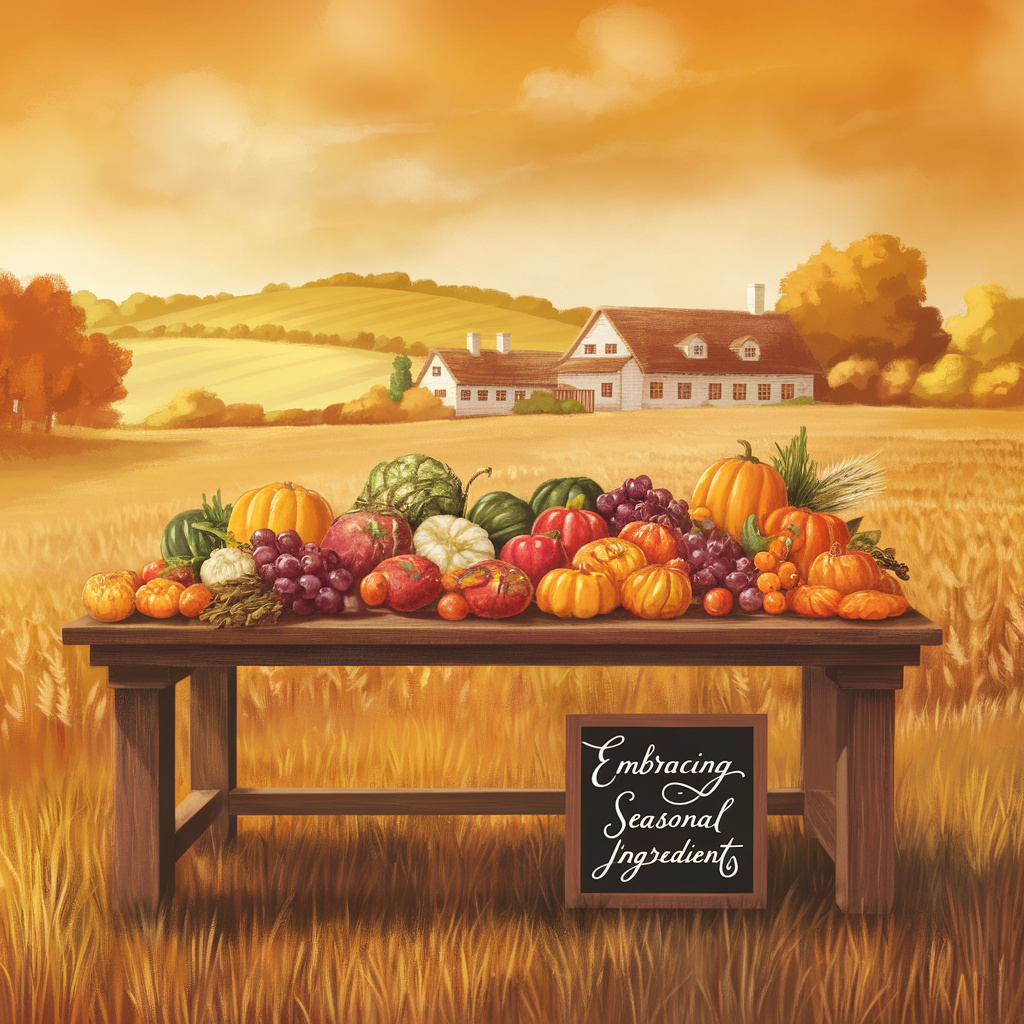Savoring Tradition: Reviving Ancient Recipes for Modern Palates
In a world where fast food reigns supreme and culinary trends seem to change as quickly as we can say “quinoa,” it’s heartening to see a growing movement that seeks to revive ancient recipes. These dishes, steeped in history, cultural heritage, and time-honored techniques, offer not just nourishment but a connection to our past. The question arises: how can we bring these traditional recipes into our modern kitchens without losing their authenticity? Spoiler alert: it’s all about balance.
A Culinary Journey Through Time
Let’s take a moment to appreciate the rich tapestry of food history. The culinary traditions we cherish today are often built upon centuries of experimentation and adaptation. The Romans, the Greeks, the Mayans… each civilization contributed unique ingredients and cooking methods that have shaped modern gastronomy. For instance, ancient Romans were the first to cultivate olives and grapes extensively, which laid the groundwork for the Mediterranean diet we adore today.
Reviving recipes from these eras isn’t just about the food; it’s about telling a story. I remember the first time I tried a recipe for a Roman honey cake. As I mixed the ingredients, I could almost hear the echoes of ancient kitchens bustling with life, laughter, and the fragrance of spices filling the air. It struck me that food has a remarkable ability to transport us through time.
The Allure of Ancient Ingredients
When we think of ancient recipes, it’s easy to imagine a list of unfamiliar ingredients. However, many ancient components are surprisingly accessible. Take grains, for example. Farro, spelt, and barley were staples in ancient diets and are now making a comeback in modern cooking. These grains pack a nutritional punch and add a delightful chewiness to dishes.
Consider this: a simple farro salad with roasted vegetables and a drizzle of olive oil can be a perfect showcase for ancient grains. It’s not just good for you; it’s a nod to the farmers of old who cultivated these crops under the sun. Plus, who can resist a dish that’s as good for the Instagram feed as it is for the palate?
Herbs and Spices: The Flavor of History
Herbs and spices also play a crucial role in reviving ancient recipes. Imagine walking through a bustling market in ancient Egypt, where the air is thick with the scent of cumin and coriander. These spices were not just for flavor; they had medicinal properties and were often used in rituals. Today, they can transform a bland dish into something extraordinary.
For example, a classic Egyptian dish, koshari, combines rice, lentils, and pasta, topped with a spiced tomato sauce and crispy onions. The spices used in this dish—like cumin and coriander—have been cherished for millennia. Each bite is a delicious tribute to a culture that embraced flavor and sustenance.
Modern Twists on Ancient Classics
It’s essential to remember that reviving ancient recipes doesn’t mean we have to replicate them exactly. The beauty lies in adaptation. Innovation allows us to cater to contemporary palates while honoring tradition. Think of it as culinary archaeology—digging into the past and bringing forward only the best bits.
Take the ancient Greek dish moussaka, for instance. Traditionally made with layers of eggplant, minced meat, and béchamel sauce, it’s a hearty meal that many of us adore. But what if you’re vegetarian? A modern twist could involve replacing the meat with lentils or mushrooms, maintaining the dish’s essence while accommodating diverse diets.
Or consider the ancient Persian fesenjan, a rich stew made with pomegranates and walnuts. It can be reimagined with chicken or made entirely plant-based, using jackfruit or chickpeas, allowing even more people to savor its unique flavors.
The Role of Community in Culinary Revival
Another critical aspect of reviving ancient recipes is community involvement. Food is inherently social, and cooking together can strengthen bonds while preserving culinary heritage. Think about family gatherings where recipes are passed down through generations—each person adding their unique flair. It’s in these moments that the magic happens.
Community cook-offs or potlucks featuring ancient recipes can be an excellent way to engage people. Imagine a “Culinary Time Travel” event where participants prepare dishes from different eras. It could spark conversations about history, culture, and personal anecdotes, turning an ordinary meal into a feast of stories.
Challenges in Reviving Ancient Recipes
Of course, not everything is a walk in the park. Reviving ancient recipes comes with its set of challenges. The biggest hurdle? Sourcing authentic ingredients. Some ancient components may no longer be available or might be hard to find. But fear not! This can be an opportunity for creativity. Substituting ingredients while maintaining the integrity of the dish can lead to delightful surprises.
Moreover, there’s the issue of taste. What delighted our ancestors might not sit well with modern palates. If you’ve ever taken a bite of a traditional dish only to recoil in horror, you know what I mean. It’s crucial to test and tweak. A pinch more salt here, a hint of acidity there, and suddenly, a dusty relic transforms into a contemporary masterpiece.
Engaging with Experts
To navigate these challenges effectively, engaging with culinary historians or chefs who specialize in ancient cuisines can be invaluable. Their insights can help bridge the gap between past and present. I once attended a workshop led by a culinary historian who specialized in medieval cuisine. As we prepared a recipe for pottage—a thick stew dating back to the Middle Ages—I was amazed at how much care went into recreating the flavors and textures of that era. The result? An oddly comforting dish that felt both foreign and familiar.
Case Studies: Successful Revivals
Let’s take a look at some successful examples of ancient recipes that have adapted brilliantly to modern dining. One standout is the revival of the ancient grain quinoa. Once a staple for the Incas, it has transformed into a health food darling, touted for its high protein content and versatility. Today, it graces salads, bowls, and even breakfast dishes. Restaurants and home cooks alike have embraced this ancient grain, proving that old can indeed be new again.
Another example is the resurgence of fermented foods, rooted in ancient preservation methods. Foods like kimchi and sauerkraut are not only trendy but also beneficial for gut health. This revival draws directly from our ancestors’ need to preserve food while enhancing flavors. The beauty of fermented foods is that they remind us that some traditions are worth keeping alive—both for taste and health.
How to Begin Your Culinary Adventure
Feeling inspired? Here’s how you can start reviving ancient recipes in your own kitchen:
- Research: Begin your journey by exploring cookbooks or online resources dedicated to ancient cuisines. Knowledge is power, after all!
- Experiment: Don’t be afraid to tweak traditional recipes. Add your spin while respecting the essence of the dish.
- Gather Ingredients: Seek out specialty markets or local farms for authentic ingredients. You might even discover something new!
- Cook Together: Invite friends or family to join you in the kitchen. Cooking is always more fun with company.
- Share Your Creations: Don’t forget to share your culinary triumphs (and mishaps) on social media. Who knows? You might inspire someone else to dive into the past!
Conclusion: A Feast for the Ages
As we move forward in our culinary journeys, it’s essential to keep the past close. Reviving ancient recipes is more than just a trend; it’s a way to honor our ancestors, celebrate diverse cultures, and connect with one another over shared meals. So, whether you’re whipping up a simple dish or hosting an elaborate feast, remember that every bite carries with it a story, waiting to be tasted and told.
So go ahead, dig out that old recipe book, scour the internet for ancient delights, and let your kitchen become a bridge between generations. After all, in a world that often feels fast-paced and chaotic, there’s something incredibly soothing about savoring tradition, one ancient recipe at a time.




